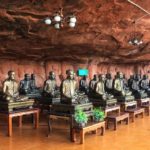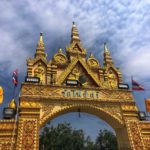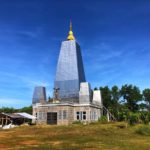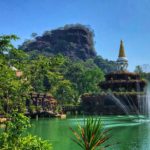Wat Phra That Phanom

Wat Phra That Phanom (วัดพระธาตุพนม) is one of the most popular day trip destinations from Sakon Nakhon. It is located a little over an hour (45 km) from downtown Sakon Nakhon in the That Phanom district of the neighboring province of Nakhon Phanom (The City of Hills). Breaking down the famous temple’s name, it translates to Wat (Temple) Phra (Buddha Image) That (Element/Essence) Phanom (Hill). When the Thai words Phra + That are put together it means “Buddha Relics”. So when everything is combined you could say that Wat Phra That Phanom means The Hill Temple of Buddha’s Relics. The hill refer to the undulating limestone hills or mountains of Laos, which you can see across the Mekhong River from the city of Nakhon Phanom, while the Buddha’s essence refers to the breastbone of the Buddha, which is said to be housed within the temple’s towering 47 meter high Chedi.
Wat Phra That Phanom’s history is believed to stretch back to the years shortly after the Buddha’s death. This time period is described in Chronicle of “Tamnan Urankathat” which talks about the Buddha’s visit to the Mekong region, when it was under rule of the Burmese Mon Kingdom. Eight years after the Buddha’s death, a disciple of the Buddha, Maha Kassapa, is said to have enshrined the Buddha’s breastbone within a square Stupa. Later, in the 10th century, the then ruling Lao Kingdom of Lan Xang built a 8 meter high Chedi to store the sacred breastbone. In the 17th century the Chedi was renovated and raised to its current height by the rulers of the Siamese Ayutthaya Kingdom.
A massive rainstorm and flood destroyed in 17th century Chedi in 1975. While this was a sad event, the destruction ultimately revealed a large bronze casket, within which was set of gold cases containing and protecting the relics of the Buddha, thus affirming the sacred history of Wat Phra That Phanom. From 1975-1979 the Chedi was meticulously restored to its original grandeur.
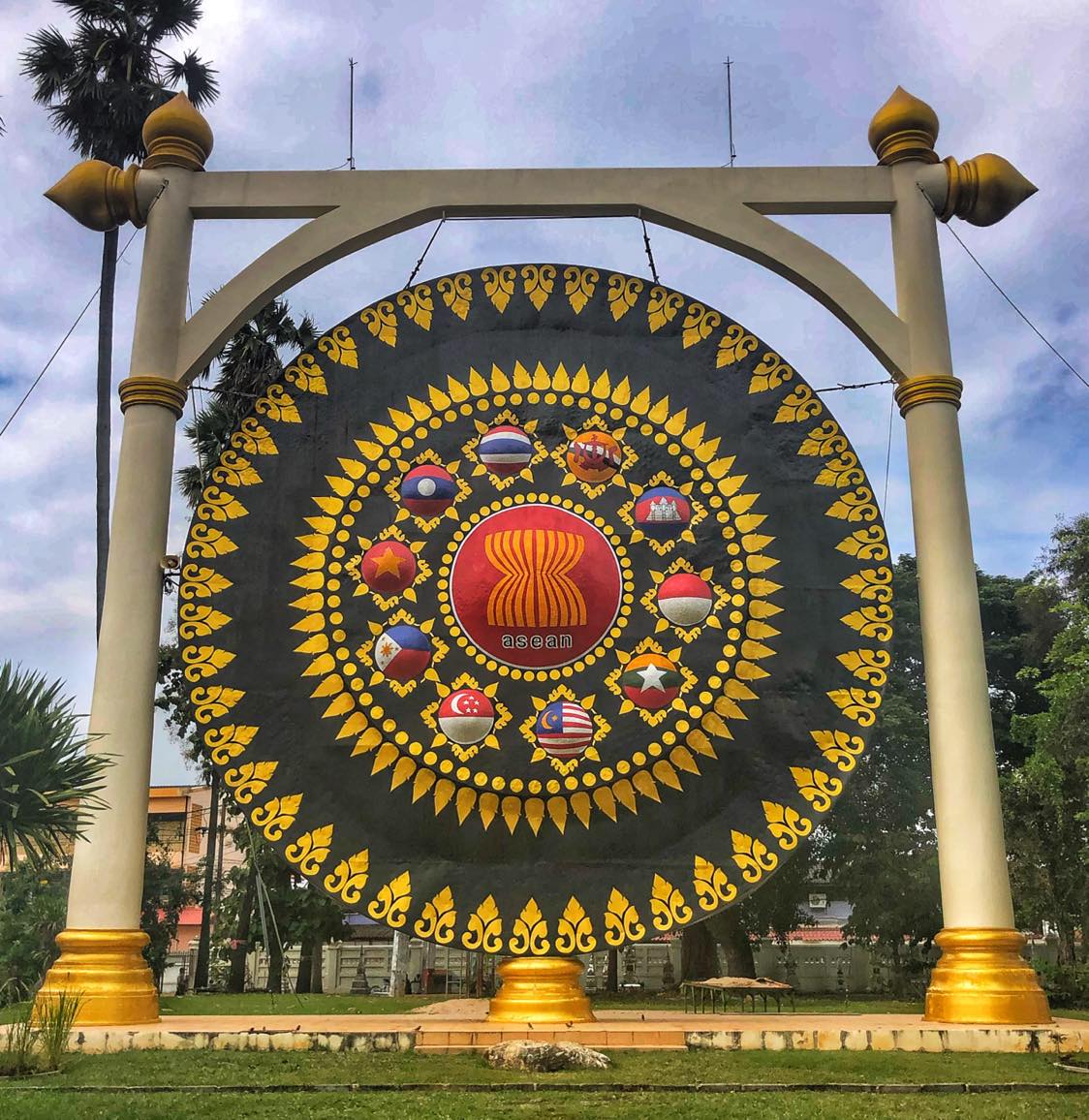
As you enter the temple grounds of Wat Phra That Phanom, one of the first things you will see is a large gong celebrating ASEAN. This is the Association of South East Asian Nations, of which Thailand is a prominent member. ASEAN was formed to encourage increased collaboration between member nations, so as to increase their economic power and standing on the world’s stage. After passing the gong, one of the first statues you will see is a Gold Buddha with small, intertwining Naga serpents at the base. This Buddha image is called Phra Put Tammajak (พระพทธธรรมจักร) or Buddha’s Wheel of the Dharma (which refers to the universal moral law of the universe).
As you get closer to the Chedi at Wat Phra That Phanom, you’ll see a number of small pagodas, Buddhist statues, and monuments. One of the most curious is an ancient stone slab with a lantern and incense vase in front. This is what is known as an Inthakhin Pillar — Inthakhin being the Hindu Indra (The King of the Devas and the ruler of the high heavens). This Inthakhin Pillar is actually an ancient sandstone Sema Stone from a sandstone temple that once existed at the site. Another famous Inthakhin Pillar in Thailand is the City Pillar of Chiang Mai, which was King Mangrai at the founding of the city in 1296

Outside of Wat Phra That Phanom’s gated area around the Chedi, you will see a sacred tree, which is surrounded by a small metal fence. This is a Rose of the Jungle tree (Brownea Grandiceps) that His Majesty H.M. King Maha Vajiralongkorn Phra Vajiraklaochaoyuhua planted in 1973.
A couple areas outside the immediate temple grounds that are also worth visiting, including a new Naga shrine, with a huge Naga dragon in the front. And on another side, you’ll find education building with several striking statues of prominent figures of Buddhist legend out in front. These include the famous Indian monk Phra Upakut wearing a lotus cap, Phra Mae Thorani wringing a flood from her hair, the hermit doctor Cheewok Komaraphat (บรมครูแพทย์ท่านชีวกโกมารภัจจ์), better known as Jīvaka Komārabhacca, who is believed to have been physician to the Buddha and the creator of many herbal remedies, and the fat Buddha monk of Thailand known as Phra Sankajai.
Lastly, please remember that Wat Phra That Phanom is one of the most sacred sites in all of Thailand (as it houses a bone relic of the Buddha), so be very polite and unobtrusive when taking photographs. To get to the city of Nakhon Phanom from here, and view the Mekhong River and sandstone hills of Laos, will take an additional 45 minutes. Then a 2 hour drive back to Sakon Nakhon. Thus you can see both attractions in a single day excursion.
Wat Phra That Phanom Photo Gallery
Visit Wat Phra That Phanom
- Affirmations in Buddhism & Thailand - June 7, 2025
- Speak Thai Naturally Without the Gymnastics - April 20, 2025
- The Best Learn Thai Podcast and YouTube Channel - April 10, 2025

